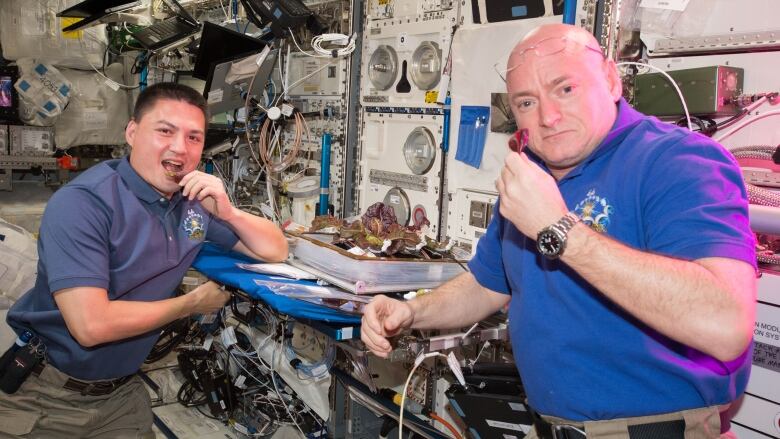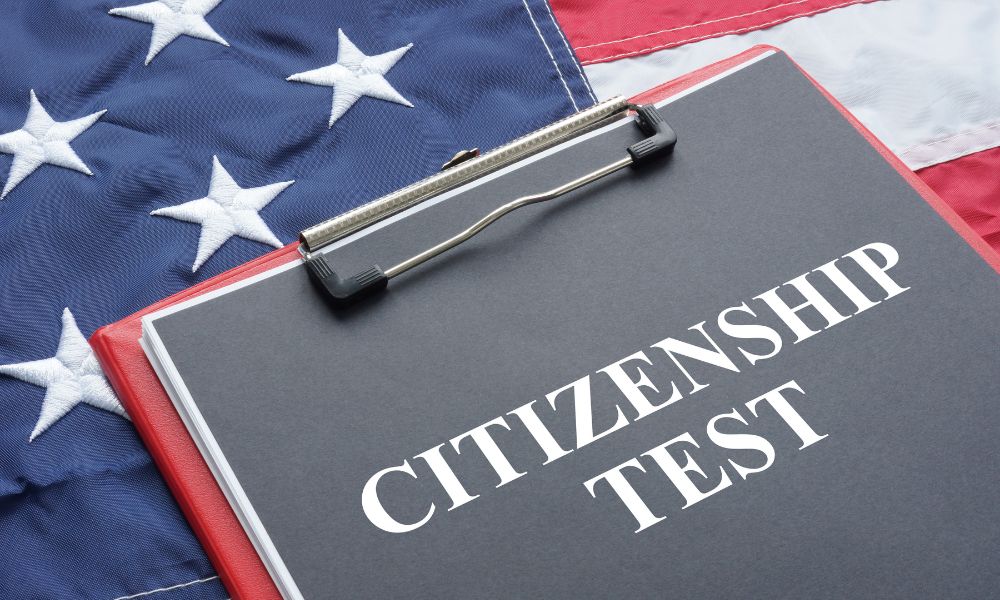뉴스&스피킹(영자신문)
하루 10분이면 영어에 대한 두려움을 극복하고 누구나 유창하게 영어를 구사하실 수 있습니다.
-
 Study: Drug Could Block Bone Loss in Astronauts in Space Researchers say a new drug compound has been found to prevent bone loss in humans visiting space.
Study: Drug Could Block Bone Loss in Astronauts in Space Researchers say a new drug compound has been found to prevent bone loss in humans visiting space.
The drug was tested on mice on the International Space Station (ISS). A new study reports the compound was engineered to help increase the formation of new bone material.
The American space agency NASA has long studied the effects of space travel on human health. Astronauts who have spent long periods in space have taken part in major studies that looked at their health before, during and after their trips, or missions.
NASA announced that American astronaut Frank Rubio recently set the agency’s record for the longest single spaceflight by a U.S. astronaut. Rubio, who is set to return to Earth on September 27, has spent 371 days in space. NASA astronaut Mark Vande Hei set the earlier record in March of 2022 after living in space for 355 days.
Some of the main health problems for humans are related to the gravitational conditions in space. Past studies have shown the low gravity environments in space can greatly reduce or stop the formation of new bone material.
NASA has estimated that astronauts spending more than six months in space can lose between six and 10 percent of bone matter. Some experiments in astronauts measured changes in their upper leg. Development of new bone can take at least three or four years after astronauts return to Earth, NASA says.
The conditions astronauts experience in space can result in bone loss up to 10 times more than is seen in human patients dealing with the bone loss disease osteoporosis, NASA notes.
Currently, physical exercise is the main method astronauts use to reduce bone loss during long periods in space. Generally, crew members aboard the ISS spend about 2.5 hours each day exercising in an effort to reduce the gravitational effects of space.
Past research on the subject has suggested a group of drugs widely used to treat osteoporosis, called bisphosphonates, have shown promise in Earth-based experiments on bone loss. That research continues.
But the new study shows success combining a bisphosphonate with another substance that has shown promise in helping to regrow bone material. That substance is called NELL-1. It was discovered by scientist Kang Ting at the Massachusetts-based Forsyth Institute.
The study was led by a team from the University of California, Los Angeles (UCLA). In a statement, the research team said the resulting compound, a molecule called BP-NELL-PEG, was given to mice aboard the ISS to test its effectiveness.
The experiments were carried out by astronauts who arrived on the ISS in June 2017. Half the mice remained on the ISS for nine weeks, while the rest were flown back to Earth four-and-a-half weeks after launch. Both sets of mice were given either BP-NELL-PEG or a salt solution containing no medicine.
The researchers reported both sets of mice who were given the BP-NELL-PEG compound showed “a significant increase in bone formation” during the experiment period. The team added that neither the mice treated on Earth nor those that received the drug in space experienced any observable side effects.
Chia Soo is with UCLA’s School of Medicine and helped lead the research. She said the findings hold great promise for, in her words, “the future of space exploration, particularly for missions involving extended stays in microgravity.”
Another member of the team was former UCLA engineering professor Benjamin Wu. He noted that the study could open the door to the same compound being used to treat patients with extreme osteoporosis and other bone-related conditions on Earth.
The scientists are still examining data on the live mice who returned to Earth halfway through the experiment. Researcher Soo said they hope the data “will provide some insight on how to help future astronauts recover from longer… space missions.”
I’m Bryan Lynn.View -
 Flying Taxis to be Made in Ohio, Home of Wright Brothers The same area where the Wright brothers developed the first airplane will soon see electric planes that take off and land vertically.
Flying Taxis to be Made in Ohio, Home of Wright Brothers The same area where the Wright brothers developed the first airplane will soon see electric planes that take off and land vertically.
The planes, called “flying taxis” will be produced under an agreement between the state of Ohio and Joby Aviation at Dayton International Airport.
Ohio Governor Mike DeWine told The Associated Press, “When you’re talking about air taxis, that’s the future.”
Around the world, electric vertical takeoff and landing (eVTOL) aircraft, or flying taxis, are becoming more common. Still, questions remain about noise levels and charging demands.
Developers say the planes are nearing the day when they will provide a way to move individual people or small groups from the top of buildings and parking spaces to their destinations.
The Wright brothers, Orville and Wilbur, lived and worked in Dayton, Ohio. In 1910, they opened the first U.S. airplane factory there. To connect with this history, Joby’s official announcement Monday took place at Orville Wright’s home, Hawthorn Hill, and ended with a special flight of a copy of the Wright Model B Flyer.
Engineers designed Joby’s production aircraft to transport a pilot and four passengers at speeds of up to 321.87 kilometers per hour. The aircraft can cover a distance of up to 160.93 kilometers. It is a quiet machine that can barely be heard in most cities, the company said. The plan is to place them in aerial ridesharing networks beginning in 2025.
Joby Aviation is a 14-year-old company that went public in 2021 and became the first eVTOL firm to receive a special kind of permission, or certification, from the U.S. Air Force. Its production efforts are supported by partnerships with Toyota, Delta Air Lines, Intel and Uber.
The $500 million project is supported by up to $325 million in payments from the state of Ohio. With the money, Joby plans to build an Ohio facility capable of delivering up to 500 aircraft a year and creating 2,000 jobs. The U.S. Department of Energy has invited Joby to apply for a loan to support development of the facility as a clean energy project.
Joby CEO JoeBen Bevirt told the AP that the company chose Ohio after a large and competitive search. Ohio's financial deal was not the largest, but the chance to bring the operation to the birthplace of aviation — with a workforce experienced in the field — led to the deal, he said.
The announcement comes as a group of Ohio’s congressional representatives has recently increased efforts to draw the U.S. Air Force’s new U.S. Space Command headquarters or Space Force units to Ohio. There, too, state leaders point to the history of the Wrights, as well as Ohio-born astronauts John Glenn and Neil Armstrong.
I’m John Russell.View -
 Citizenship Test Changes Might Require Better English Skills The United States admitted over 967,000 people as new citizens in 2022.
Citizenship Test Changes Might Require Better English Skills The United States admitted over 967,000 people as new citizens in 2022.
United States Citizenship and Immigration Services (USCIS) said that was the largest number of people naturalized since 2008.
To become a U.S. citizen, a candidate needs to live in the country as a permanent resident for at least five years and be over 18 years old. After applying, a candidate for citizenship needs to pass an interview with a USCIS officer.
In the interview, an official assesses the person for their English ability, knowledge of American history and government, and personal background. Over 96 percent of people pass the naturalization test. But changes are coming to the test that could make it more difficult for English learners.
Carolyn Quinn and John Schmelzer teach a free class in Montgomery County, Maryland, to help prepare people living in the area for the interview. They said it is most important that people are able to understand the questions the interviewer is asking. It is not as important to speak in grammatically correct sentences. The question the interview is trying to answer is: “Do these people understand enough English to be a functioning citizen?” Schmelzer said.
At the beginning of each class, Quinn and Schmelzer ask their students simple “small talk” questions they might hear in the interview, like “How did you get here today?” or “Why do you want to become a United States citizen?” Much of the interview is based on questions on the Application for Naturalization Form, called the N-400. Most are personal questions related to employment, family and personal history.
Rajbit Kahn took Quinn’s class and passed the naturalization interview in August. She said the class gave her more confidence to speak English in the interview. Before the class, she rarely spoke English, she said. But now, “I talk to anyone.”
However, Quinn stresses to her students that her class is not an English class. And she has students enter her class without enough English knowledge to pass the interview.
With the increase in Afghan immigrants into the United States, Quinn said she has had a few Afghan women come into her class. She said, “They never had any kind of schooling. So, they don’t know how to write. They don’t know how to read. They don’t know letter sounds.” Often, family members with better English skills will fill out the N-400 form for them. But they would be unable to answer the interview questions themselves.
Possible changes to the naturalization interview would make civics questions multiple choice to “reflect current best practices in test design,” USCIS said in a document explaining the update to the test. Schmelzer said that would make the test harder for immigrants who may not have a great understanding of American history or English.
For now, students memorize 100 civics questions. Ten of the questions will be asked on the day of the interview and applicants must answer six correctly to pass. One question is “Name one war fought by the United States in the 1800s.” Currently, people just need to memorize one war fought during that 100-year period. But a multiple-choice test would require knowledge of four wars presented as answer choices and know which one was fought in the 1800s.
“You're forcing them to expand their memorization,” Schmelzer said.
Another proposed change would add a speaking test to assess English ability. The officer would present three photos and the interviewee would have to describe what is happening in the pictures. Currently, English knowledge is assessed through questions from the N-400 and other small-talk questions.
The new interview changes are currently being tested in several locations around the country. USCIS will hear feedback about the tests before the end of the year.
Quinn and Schmelzer said the test should be updated. Just one civics question is related to a female American historical figure, Schmelzer said.
But Quinn questions what is to be gained by making changes to the test to make it harder.
People in her class “put their souls” into becoming citizens. “How much more do we need to ask them to do?” she said.
John Yepow is another of Quinn’s students who along with his wife, recently became a U.S. citizen. Yepow came from the Democratic Republic of Congo. He lived in Zambia for 10 years before moving to the United States.
Yepow, who works as a medication technician, said he follows American politics closely. He calls himself a lifelong learner and has even taken online classes about American history.
“I want to learn and make sure I’m integrated into American society,” he said.
Yepow added: “This is the land of opportunity. We are dreaming big." He said he will make sure to take advantage of every opportunity.
I'm Anna Mateo
And I’m Dan Novak.View -
 Google Links Bard AI Tool to Its Other Products Google has linked its Bard artificial intelligence (AI) tool to its Gmail service and other company offerings. The American-based search engine company says the change will permit its users to easily use the AI technology across different product areas.
Google Links Bard AI Tool to Its Other Products Google has linked its Bard artificial intelligence (AI) tool to its Gmail service and other company offerings. The American-based search engine company says the change will permit its users to easily use the AI technology across different product areas.
Bard is a chatbot, a computer-driven system designed to interact smoothly with humans and perform high-level writing. Such tools are also known as “generative AI” or “large language models.”
The first widely released chatbot was ChatGPT. It was launched by technology company OpenAI late last year. Google announced the launch of its Bard tool last February. And shortly thereafter, Microsoft announced it was redesigning its Bing search engine to include OpenAI’s chatbot technology. Microsoft has invested billions of dollars in OpenAI.
In an announcement Tuesday, Google said it had created a system that makes it possible for users to extend the AI tool to other company services, or apps. This brings Bard technology to Google products including Gmail, Drive, YouTube, Maps, etc.
The system to expand the AI tool to other Google apps is called Bard Extensions. Users can decide which apps they want to add Bard to. This can be done by going to Google’s Chrome browser and following the process to activate new extensions. For the moment, Bard Extensions is only available in English.
In a statement explaining the change, Google gave several descriptions of how users could use Bard with other apps. For example, a user of Gmail could ask Bard to create a summary of all emails dealing with a particular subject.
Another example is a possible solution to someone planning a major family trip. In such a case, a series of Google apps can be used together with Bard.
The user can ask Bard to search through Gmail messages to get available trip dates from the emails of multiple family members. At the same time, a user can ask Bard to use Google Flights to look up flight dates that would work for the trip. Bard can also be used to book available hotel rooms and connect with Google Maps to provide everyone with directions to the airport. And users could also use Bard to find YouTube videos of things to do during the trip.
Another example Google gives is how Bard can link up with other apps to assist someone with a job search. In this case, Google suggests asking Bard to “find my resume titled June 2023 from my Drive and summarize it to a short paragraph personal statement.”
Another new add-on for Bard permits users to invite others into their Bard conversations.
In its announcement, Google also said it had created a way for users to verify whether information produced by the Bard tool is correct or not. This move is seen as an effort by Google to help users get over concerns about its AI system returning false, outdated or damaging results.
Google says the use of Bard’s “Google it” button can test the correctness of its results. When people use this button, Bard’s results are compared with the results of a Google search on the same subject. Then, Bard points out the differences in its own results compared to information returned from Google search.
Google senior product director Jack Krawczyk told Reuters news agency the company thought it was important to add this ability to help users find the most truthful results.
“We are presenting (Bard) in a way that it admits when it’s not confident,” Krawczyk said. He added that the effort is part of a goal by Google to build user trust in generative AI tools, while holding Bard accountable for its performance.
In announcing Bard Extensions, Google promised to protect users' privacy by blocking its employees from seeing any personal information Bard gets from apps such as Gmail or Drive. It said it had also taken steps to prevent data linked to Bard from being used to target users with ads or to train the AI tool.
Krawczyk noted that currently, Bard users can only pull in information from other Google apps. However, he said Google is already working with other companies to be able to connect their apps to Bard in the future.
I’m Bryan Lynn.View -
 India, Canada Expel Diplomats over Killing of Sikh Activist India expelled a Canadian diplomat Tuesday and accused Canada of interfering in its internal affairs.
India, Canada Expel Diplomats over Killing of Sikh Activist India expelled a Canadian diplomat Tuesday and accused Canada of interfering in its internal affairs.
The move came one day after Canadian Prime Minister Justin Trudeau said his government was investigating a possible connection between India and the killing of a Sikh activist, Hardeep Singh Nijjar.
Nijjar, a Canadian citizen, was an activist in the Sikh independence movement. He was shot to death on June 18 outside a Sikh cultural center in Surrey, British Columbia.
Canada expelled a top Indian diplomat in protest.
The Indian government has denied any involvement in Nijjar’s killing. But Trudeau said, “We are simply laying out the facts as we understand them.” He added, “We want to work with the government of India to lay everything clear and to ensure there are proper processes.”
India has repeatedly accused Canada of supporting the Sikh independence movement, called Khalistan. The movement is banned in India but has support among the Sikhs living in other countries.
In 2020, the Hindu nationalist government of Prime Minister Narendra Modi called Nijjar a terrorist. Indian media reported that he was suspected of organizing a bombing in Punjab, India, and training terrorists in a small area near Vancouver, Canada.
What is the Khalistan movement?
The Sikh independence movement began as an armed insurgency in the 1980s among Sikhs demanding a separate homeland. It was centered in northern Punjab state, where Sikhs are the majority. Sikhs make up about 1.7 percent of India’s total population.
In 1984, Indian forces attacked the Golden Temple, Sikhism’s holiest religious center, in order to capture separatists who had taken refuge there. The government reported around 400 killed in the operation. But Sikh groups say thousands were killed. The dead included Sikh militant leader Jarnail Singh Bhindranwale, whom the Indian government accused of leading the armed insurgency.
On October 31, 1984, Prime Minister Indira Gandhi, who ordered the attack on the temple, was assassinated by two of her bodyguards, who were Sikhs.
Her death led to several anti-Sikh riots. Crowds of Hindus went from house to house across northern India, pulling Sikhs from their homes and killing them.
There is no active insurgency in Punjab today, but the Khalistan movement still has supporters in India and abroad. And Prime Minister Narendra Modi’s government has also arrested leaders from groups that are linked to the movement.
How strong is the movement outside India?
India has been asking countries like Canada, Australia and Britain to take legal action against Sikh activists. India has raised these concerns with Canada, where 770,000 Sikhs make up nearly two percent of the country’s population.
Earlier this year, Sikh protesters removed an Indian flag and broke the window at the country’s office in London to protest the arrest of a Sikh religious leader. Protesters also smashed windows at the Indian consulate in San Francisco and fought with embassy workers.
The Indian government has accused Khalistan supporters in Canada of damaging Hindu temples with “anti-India” graffiti and of attacking India’s diplomatic office in Ottawa during a protest in March.
Last year, Paramjit Singh Panjwar, a Sikh militant leader and head of the Khalistan Commando Force, was shot dead in Pakistan.
I’m Andrew Smith.View

